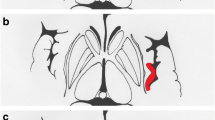Abstract.
Post-stroke hemichorea is an uncommon involuntary hyperkinetic disorder involving unilateral body parts. The incidence and precise lesion location of post-stroke hemichorea remain unclear. The authors describe 27 consecutive patients with hemichorea after stroke. The incidence of post-stroke hemichorea was 0.54 % (27 out of 5,009 patients). The lesions were located in the caudate and putamen (n = 6), cortex (n = 6), thalamus and subthalamic area (n = 4), subthalamus (n = 4), putamen (n = 3), caudate (n = 2), and the globus pallidus (n = 2). Over the mean follow-up period of 22 months, the hemichorea disappeared in 56% of the patients, while it persisted in others. The rate of disappearance of hemichorea was significantly higher in patients with cortical strokes than in those with subthalamic lesions (P < 0.05).We conclude that hemichorea is a rare manifestation of stroke and most often produced by lenticular lesions followed by subthalamic and cortical lesions. The functional prognosis is better in patients with cortical lesions than those with subthalamic strokes.
Similar content being viewed by others
Author information
Authors and Affiliations
Corresponding author
Rights and permissions
About this article
Cite this article
Chung, S.J., Im, JH., Lee, M.C. et al. Hemichorea after stroke: Clinical-radiological correlation. J Neurol 251, 725–729 (2004). https://doi.org/10.1007/s00415-004-0412-5
Received:
Revised:
Accepted:
Issue Date:
DOI: https://doi.org/10.1007/s00415-004-0412-5




